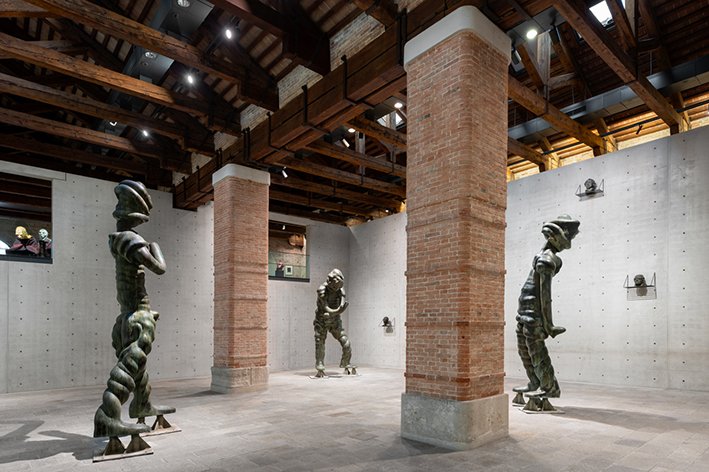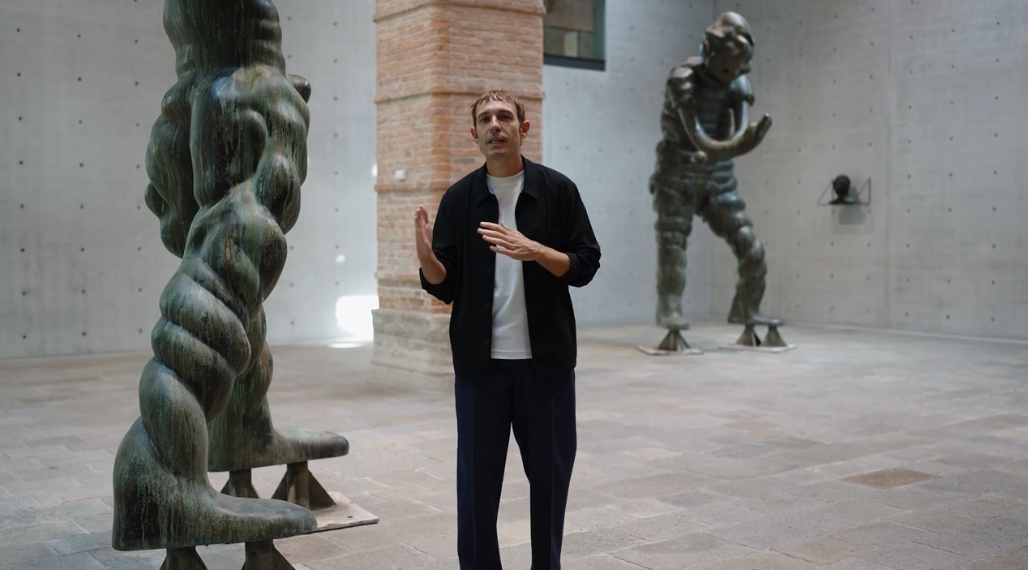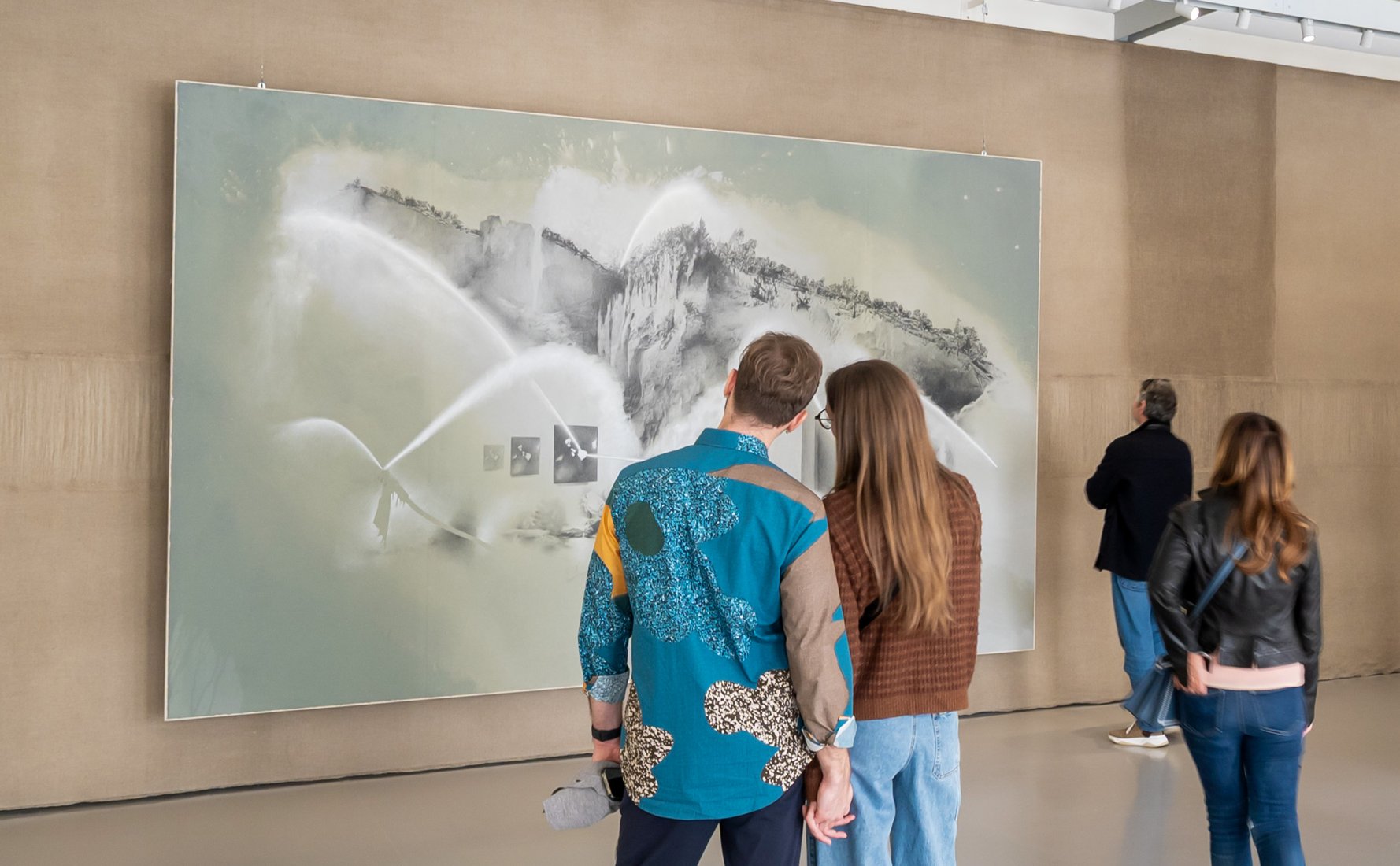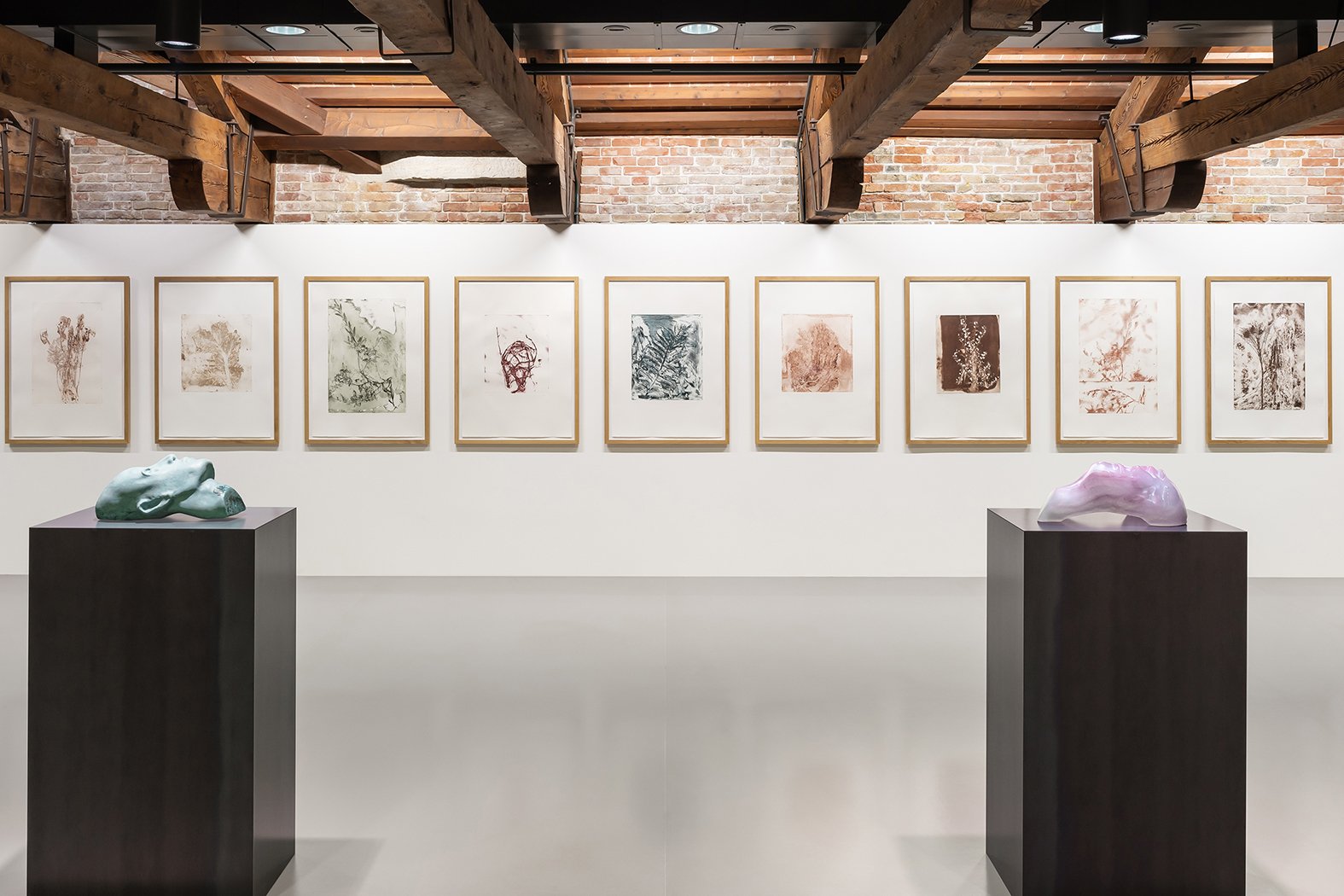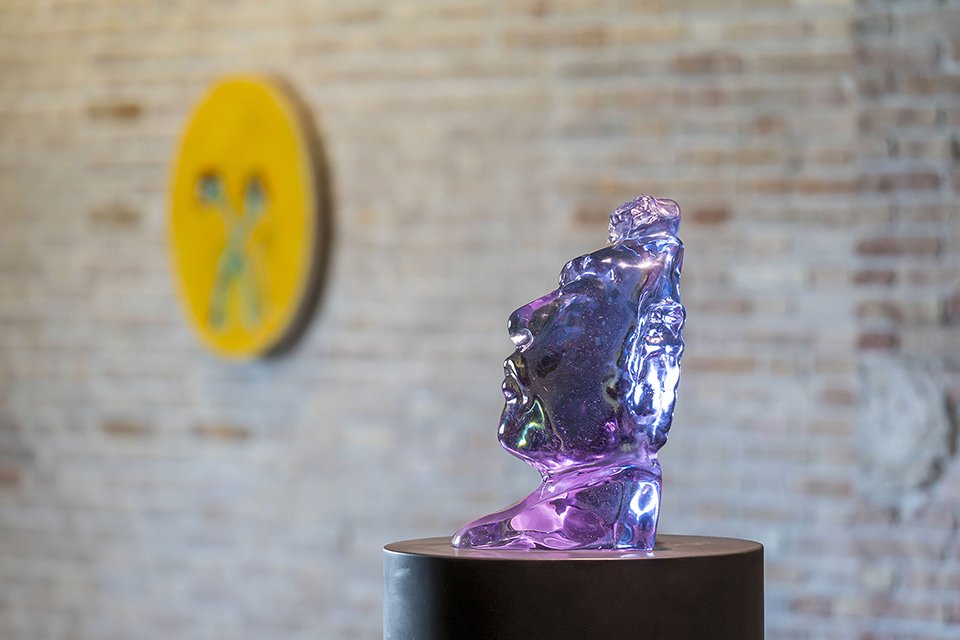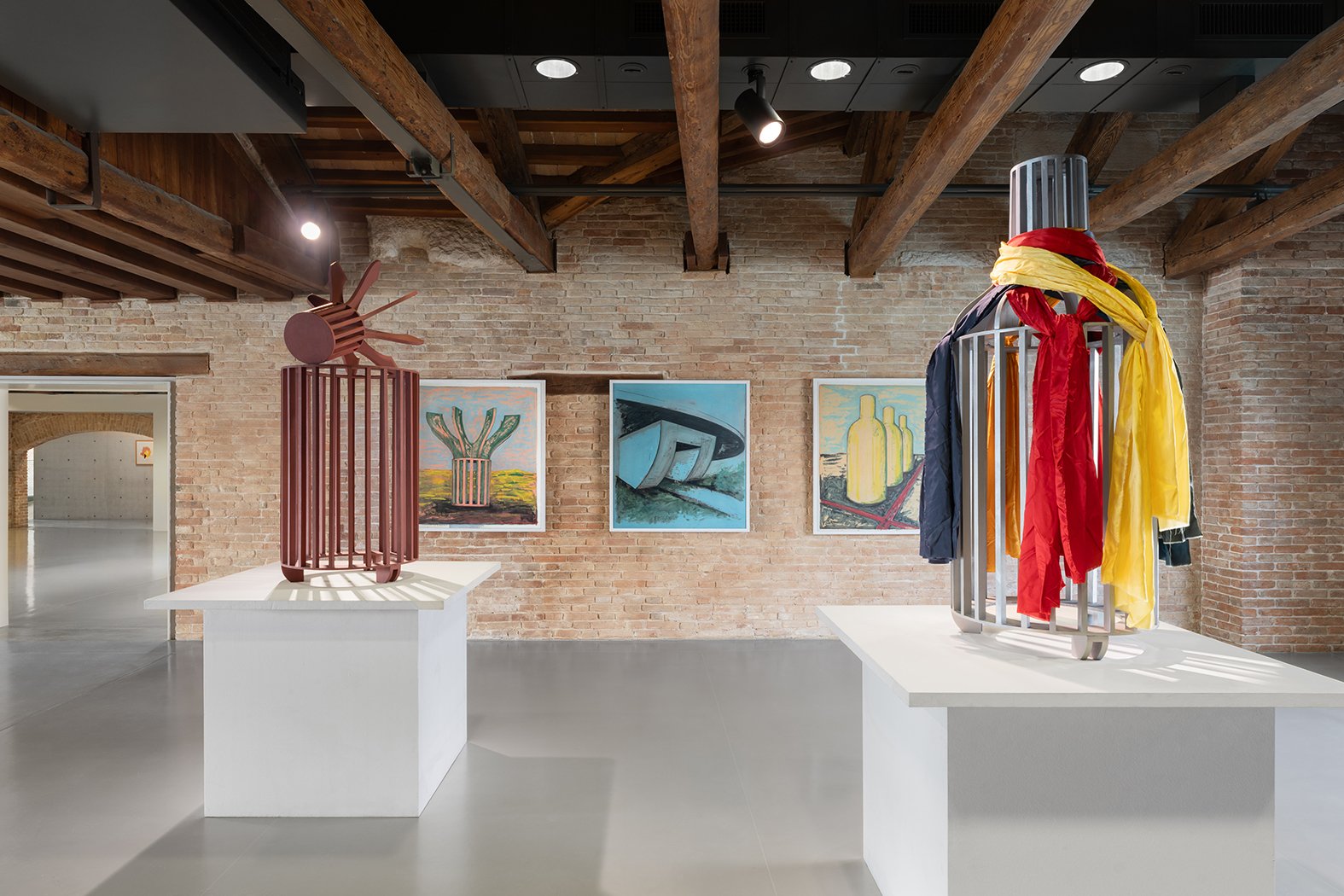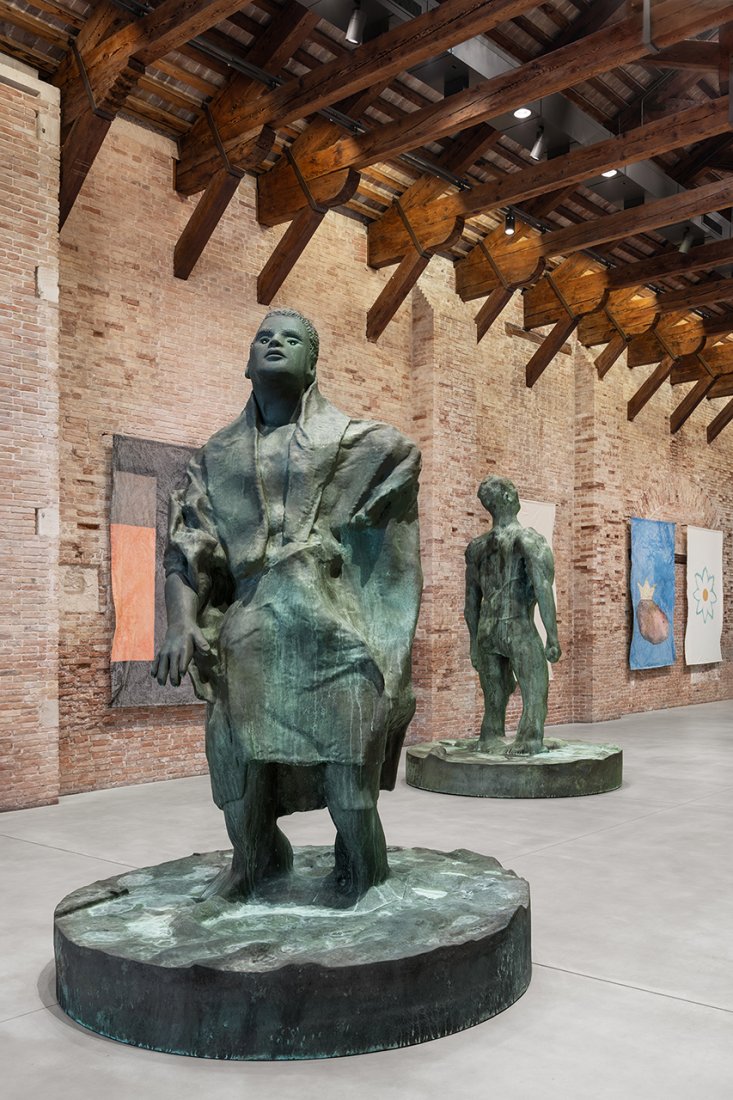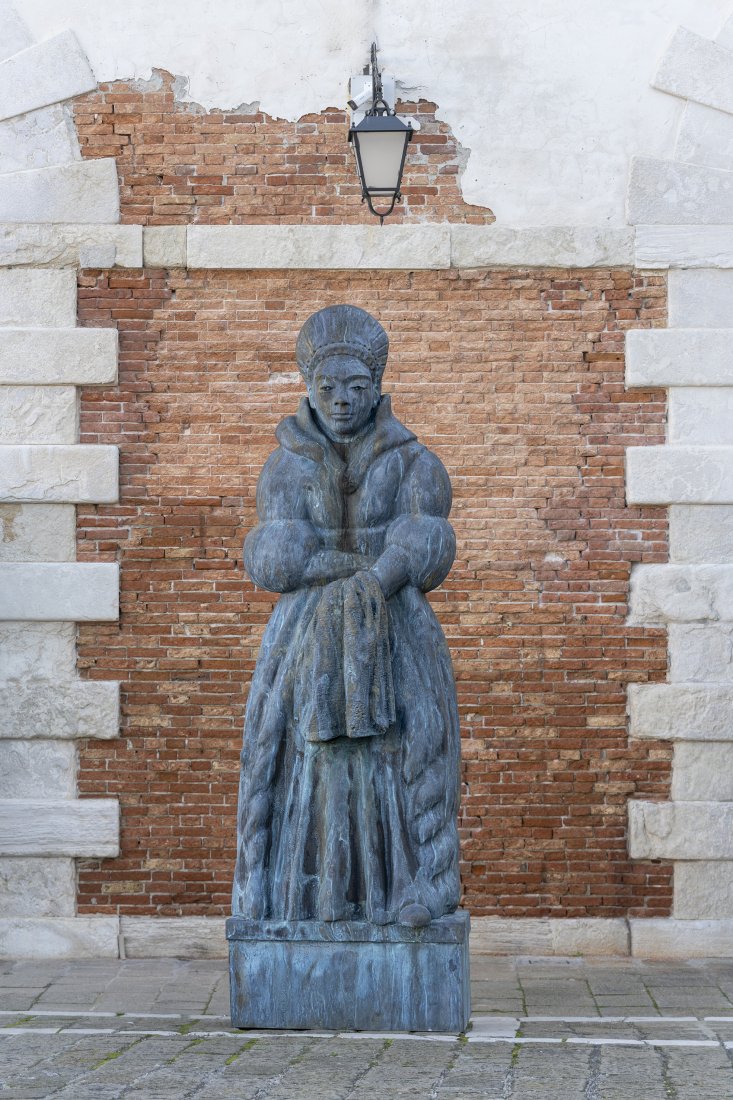"'Reaching Silence”: Thomas Schütte and the Fabrication of Artworks' by Jean-Marie Gallais
Thomas Schütte manages to convey a sense of fluidity, even in the most solid materials such as steel and bronze, which he began using in the early 1990s.
[…]
Water, or rather the liquid state and its representations, occupies a special place in Schütte’s work, including his watercolors, whose very technique evokes the subject. The fountains of Weinende Frauen [Weeping Women], begun in 1987, provide tears to stylized, almost abstract faces emerging from walls or corners. Beyond its archetypal representation, water also evokes the passage of time, and is considered by Schütte to be one of the materials of sculpture, as in some of Robert Gober’s installations. It is an expression of fluidity—a term that Schütte refutes, however, preferring to contrast it with the solidity of materials that last over time. This is one of the paradoxes of the German sculptor’s work: he manages to convey a sense of fluidity, even in the most solid materials such as steel and bronze, which he began using in the early 1990s. The relationship between his practice and the elements is tightly bound up in this: water, earth, fire, and air constantly move through the media he uses, with most of them undergoing changes of state. US artist Charles Ray, Schütte’s contemporary, has written: “Thomas Schütte’s sculptures [...] maintain a fluid, malleable quality even after leaving clay and being made in bronze. [...] As a bronze, the form is more pliable than the clay the sculpture’s mold was patterned on. This fluidity isn’t just across the surface of the figure, but it is a form that exists between the artist, his sculpture, and the perception of the viewer.” (12) This aspect, one of the most irrational in Schütte’s work, is particularly perceptible in the way he juggles materials or the way he uses the transparency of glass, for example: he places us before forms that seem unfixed.
[…]
Accidents, Variations and Series
Whereas Thomas Schütte imposes a form of equanimity on himself in his daily work (“I close my shop at 6 o’clock and forget the whole thing” (13)), he creates a space of absolute freedom when he has his hands on his material, willingly breaking the rules he imposed on himself the day before. This is reflected in the artworks by incessant to-ing and fro-ing, reworking, and reformulating, sometimes with periods of “oblivion” lasting several decades. His output doesn’t include many one-offs; the differences between pieces may come from enlargements, from the transformation of certain details, altering attitude or expression, or from changes
in material or surface treatment, as if the energy invested in any one form had to keep “paying off” until the motif (or the artist) gets exhausted. The risk, of course, is that one loses oneself in the quest for an unattainable, ideal form, a criticism that some commentators have levelled at him. It’s the paradox that comes with such freedom: “I am lucky that I am not tied down. I am still free to move. Whether that is a good thing… I have no idea. It is never discussed. It is accepted and is devoid of repercussions. No one else is joining in…” (14) His collaborators can’t do anything about it, the artist is desperately alone in the end—feelings often shared by Schütte in his drawings and watercolors. He has confided to Marta Gnyp that, from time to time, from lack of motivation he will rework existing pieces in order to stave off a burn-out. (15)
It has to be said that Schütte produces large quantities of work and keeps everything, including trials, intermediate stages, and failures, reserving a second chance for all of them. But then when is it time to stop? “One of the hardest things you can do is to breathe life into dead material. And whenever I think: This head is now alive, then I go no further. Then I stop. This happens in principle very quickly. […] The Wichte [Jerks] were [...] finished after an hour. And if you’re lucky, they are still alive after the casting and after the patina.” (16) Along the way, accidents, misunderstandings, and technical blunders spark new directions.
This was the case when a group of wax Geister left at the foundry softened and collapsed on top of each other, forming the basis of Kriegerdenkmäler (2003–04) and then Zombies (2007), probably inspired by the haphazard piling up of production fragments and scraps in a warehouse. On other occasions, Schütte and his cohort manage to bring the accident under control, after a period of lengthy observation.
[…]
12. Charles Ray, «How Do You Tie a Bronze Knit?,» in Thomas Schütte, ed. Paulina Pobocha, exhibition catalog, New York, Museum of Modern Art, September 29, 2024-January 18, 2025 (Berlin: Hatje Cantz, 2024), 22.
13. Playing with Materials.
14. Loock, Collector’s Choice, 171.
15. Interview with Marta Gnyp, in Thomas Schütte. Trois actes, exhibition catalog, Paris, Monnaie de Paris, March 15-June
16, 2019 (Paris: Monnaie de Paris; Ghent: Snoeck, 2019), 165.
16. Vischer (2014).
Excerpts from the catalogue of the exhibition "Thomas Schütte. Genealogies" at Punta della Dogana
